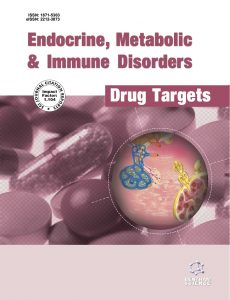Publications

Pain and Muscles Properties Modifications After Botulinum Toxin Type A (BTX-A) and Radial Extracorporeal Shock Wave (rESWT) Combined Treatment
Authors: Marisa Megna 1, Riccardo Marvulli 1, Giacomo Farì 1, Giulia Gallo 1, Franca Dicuonzo 1, Pietro Fiore 1, Giancarlo Ianieri 1
Affiliations: Department of Basic Medical Sciences, Neuroscience and Sensory Organs, University of Bari “Aldo Moro”, Policlinico of Bari, Piazza G. Cesare 11, 70124 Bari, Italy.
Journal: Endocrine, Metabolic & Immune Disorders - Drug Targets, 2019, Volume 19 , Issue 8, Pages 1127-1133 (DOI: 10.2174/1871530319666190306101322)
-
Field & Applications:
- Medical
- Treatment evaluation
- Neurology
- Musculoskeletal disorder
- Musculoskeletal rehabilitation
- Physiotherapy
In this study we revealed usefulness of MyotonPRO® device we are able to assess minimum and objective variations of muscle tone and stiffness. This device helps us to measure simultaneously the rheological parameters of omolateral and controlateral agonist and antagonist muscles [31]. So we can have a more complete vision of the muscle tissue, especially in different neuromuscular diseases; the physiatrist, specifically, has the ability to program a specific and targeted rehabilitation treatment for each patient, with positive effects also on the patient’s psyche, who will be more motivated to undergo rehabilitation therapy [32].
Background and objective: Spasticity (most common disability in upper motor neuron syndrome or UMNS) caused an inability of patients’ to perform daily activities and a decrease in quality of life. One of the promising methods nowadays, but still not widely used in everyday practice, for spasticity reduction is extracorporeal shock wave. The aim of this study was to evaluate the objective clinical effects of combined treatment botulinum toxin type A and radial Extracorporeal Shock Wave Therapy in spasticity post stroke.
Methods: We considered 30 subjects (14 female and 16 male) with post stroke spasticity of Biceps Brachii, Superficial Flexor Digitorum, Gastrocnemius Medialis and Lateralis and we divided patients into two groups (group A received botulinum toxin injection and physiotherapy while group B received botulinum toxin injection, rESWT and physiotherapy). Assessments were performed before treatment (t0), after 1 (t1), 2 (t2) e 3 (t3) months using Modified Ahworth Scale, Visual Analogical Scale for pain and MyotonPro® device (to assessed myometric evaluation of muscles tone and stiffness).
Results: Visual Analogical Scale, Modified Ahworth Scale, muscles tone and stiffness statistically decreased until t3 in the group A and in the group B, but the differences between the two groups were significant at the t1 only.
Conclusion: Radial Extracorporeal Shock Wave Therapy could be an effective physical treatment aimed at the reduction of upper and lower limbs spasticity and could lead to the improvement of trophic conditions of the spastic muscles in post-stroke.
Keywords: Botulinumtoxin type A; myometric examination; pain; physiotherapy; radial extracorporeal shock waves therapy; spasticity.
rESW could be an effective physical treatment aimed at the reduction of upper and lower limbs spasticity and could lead to improvement of trophic conditions of the spastic muscles in post-stroke. Further clinical studies are still required to evaluate the mechanisms of the antispastic effect of rESW, including vascular regulation and trophic conditions, increasing number of patients.


